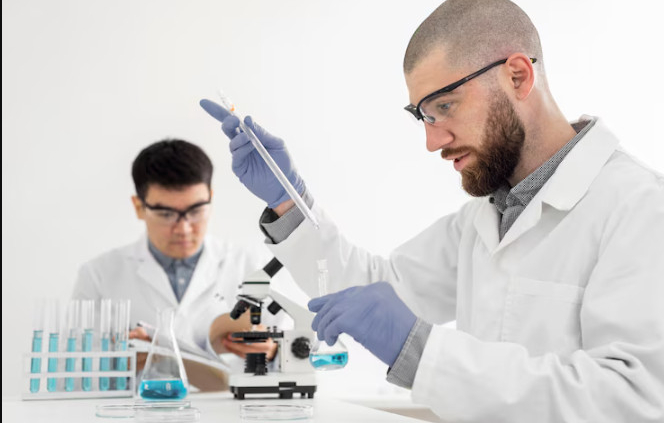Reliable Large-Batch Protein Purification: A Scalable Solution for High-Quality Production
Protein purification plays a foundational role in research, biotechnology, and pharmaceutical manufacturing. While small-batch purification is common in early-stage development, scaling up to meet industrial or clinical demand presents new challenges that require well-planned, reliable processes. The need for reliable large-batch protein purification has never been greater as companies push for efficiency, consistency, and regulatory compliance in high-volume operations.
In this article, we provide practical insights and best practices for achieving dependable large-scale protein purification while maintaining quality, yield, and cost-effectiveness.
Understanding Large-Batch Protein Purification
Large-batch protein purification refers to the process of isolating and refining specific proteins from complex mixtures—such as cell lysates or fermentation broth—on a commercial or industrial scale. The ultimate goal is to obtain a highly pure, biologically active protein in quantities sufficient for downstream applications like therapeutic drug formulation, enzyme production, or diagnostic manufacturing.
Unlike lab-scale protocols, which can be more forgiving and adaptable, large-batch purification must be engineered for consistency. This means integrating scalable techniques, process controls, and validated systems that reduce variability and risk.
To learn more about scalable purification platforms, click for more info on our solutions and services.
Key Considerations for Scalable Protein Purification
Protein Characteristics: Understanding your target protein’s molecular weight, charge, hydrophobicity, and stability is crucial when designing a scalable purification strategy. These factors influence the selection of buffers, resins, and purification methods.
Expression System and Host Impurities: The system used to produce the protein—whether E. coli, yeast, CHO cells, or others—impacts purification complexity. Host cell proteins (HCPs), nucleic acids, and endotoxins must be efficiently removed at scale.
Product Consistency: Regulatory bodies demand lot-to-lot consistency. To meet this requirement, large-scale purification must eliminate variations and ensure repeatability.
Process Throughput and Time Efficiency: Time is money in large-scale production. Purification strategies must balance yield and purity with processing time and operational costs.
If your organization is facing scale-up challenges, contact us to speak with one of our purification specialists.
Core Techniques in Large-Batch Protein Purification
Successful large-batch purification depends on a combination of tried-and-tested techniques, optimized for throughput and scalability.
Chromatography
Chromatographic methods remain the backbone of protein purification. Industrial setups often employ multiple stages, each designed to remove specific types of impurities or enrich the target protein.
Affinity Chromatography: Particularly effective for tagged proteins, it offers high selectivity and reduces the number of required purification steps.
Ion Exchange Chromatography (IEX): Utilizes the protein’s charge to separate it from contaminants. It’s both scalable and cost-efficient.
Hydrophobic Interaction Chromatography (HIC): A powerful secondary purification method that helps in removing aggregated or misfolded proteins.
Size Exclusion Chromatography (SEC): Used for final polishing, although throughput is limited, making it less common at very large scales.
Each chromatography stage must be optimized for flow rate, binding capacity, and recovery yield. Modern large-scale systems are often automated for precision and repeatability.
Ultrafiltration and Diafiltration
These membrane-based filtration techniques are essential for concentrating the protein solution and performing buffer exchanges. Tangential flow filtration (TFF) is widely used because it reduces fouling and is easier to scale than traditional dead-end filtration.
Precipitation and Clarification
Bulk impurities are often removed using chemical precipitation or centrifugation. These techniques prepare the sample for chromatography by reducing load complexity and preventing column clogging.
Early-stage clarification can include:
- High-speed centrifugation
- Depth filtration
- Flocculant-assisted precipitation
Each method must be scaled while maintaining gentle conditions to preserve protein functionality.
If you’re unsure which purification method is right for your protein, find out more info on our customized consultation services.
Overcoming Scale-Up Challenges
Scaling up introduces new constraints that require proactive solutions:
Maintaining Protein Stability: High-volume processing increases exposure to heat, pH shifts, and mechanical stress. Use optimized buffers and gentle processing techniques.
Preventing Contamination: Closed system operations reduce contamination risks. Cleanroom environments and validated cleaning protocols are essential.
Batch Consistency: Implementing in-line sensors and real-time analytics helps maintain critical process parameters.
Resource Efficiency: Reusable columns, high-capacity resins, and automated systems help reduce costs and labor.
Our team can help you design a purification process tailored to your facility and goals. Contact us to schedule a free consultation.
Quality Control and Regulatory Compliance
In biomanufacturing, quality cannot be compromised. Regulatory guidelines require extensive documentation and validation of the purification process. Large-batch purification must incorporate:
- Standard Operating Procedures (SOPs)
- Process Validation
- Cleaning Validation
- In-Process Controls
- Final Product Testing (e.g., purity, potency, endotoxin levels)
Implementing these measures ensures your product not only meets specifications but is also audit-ready. For details on compliance support, click for more info about our regulatory advisory services.
Applications of Large-Batch Protein Purification
The need for reliable protein purification spans multiple industries:
Biopharmaceuticals: Monoclonal antibodies, vaccines, and recombinant therapeutics all require high-purity proteins at scale.
Diagnostics: Diagnostic reagents demand high batch consistency for reproducibility in assays.
Agriculture & Industrial Enzymes: Large volumes of enzymes are used in food processing, textiles, and detergents.
Academic & Government Research: Grants and clinical studies often depend on consistent, reproducible protein preparations.
No matter your field, our large-batch purification services are designed to fit your operational and regulatory needs. Contact us today to learn more about our tailored purification support.
Final Thoughts
Scaling protein purification from the lab bench to commercial production doesn’t have to be overwhelming. With the right technologies, workflows, and expertise, reliable large-batch protein purification is entirely achievable. By investing in scalable methods, robust equipment, and qualified partners, you ensure that your protein products maintain the highest standards of purity, safety, and performance.
Whether you’re launching a new therapeutic or scaling production to meet growing demand, we’re here to help. Click for more info on how we can support your journey toward dependable, high-volume protein purification—or contact us to speak directly with our experienced team.




Leave a Reply
Want to join the discussion?Feel free to contribute!